From IRL to URL: A past, present, and future approach to storytelling in changing times
17 December 2020 – Jeremy Diamond
covid-19, digital media, community history, collaboration, education, international, Canada, Indigenous People
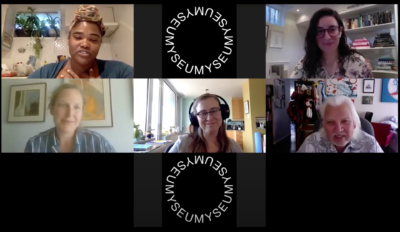
Screen-grab from virtual “Ask an Elder” session hosted by the Myseum. Image credit: Myseum of Toronto
As a public historian for twenty years, I often look back on my time in the classroom and the daily debates on the definition of the term “public history.” Recently, I find myself reflecting more often on these classroom conversations from decades ago. With the onset of COVID-19, we saw an overnight change in how we were able to share history in the world. Then, with the recent surge in demonstrations against systemic racism, we saw the need for the public to understand the long history of this issue, and how it impacts the present day, more than ever before.
I realize that moving forward, public history can play a vital role in what stories we share, where we gather, and how we reflect on the past to impact the future. As CEO of Myseum of Toronto, a small (but mighty) not-for-profit organization in Canada’s largest city, I am seeing how public history can do what it is intended to do—putting history to work by applying it to the important issues of the day. At Myseum, we aim to do this in all our programming, shedding light on the underrepresented stories of the past, reimagining the present, and inspiring the future. One such underrepresented history in Canada is that of our Indigenous past.
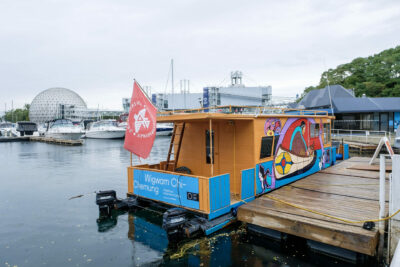
Wigwam Chi-Chemung boat painted with Indigenous artwork for Culture Days on the Lake Ontario waterfront. Photo credit: Will O’Hare/ Myseum of Toronto
Over the years, Myseum has worked closely with Indigenous intellectual, poet, painter, broadcaster, filmmaker, and orator Elder Dr. Duke Redbird in order to help bring his ideas of sharing Indigenous history and culture to life. In 2019, Dr. Duke Redbird approached us with an idea and, as we do with all our various community partners, we collaborated on a platform to support his vision. This took shape as a summer program called Wigwam Chi-Chemung (Big House Canoe), which aimed to tell the story of the history of Indigenous presence on Toronto’s waterfront. Throughout the summer, the program lived on the waters of Lake Ontario through a public art installation, Indigenous interpretive learning centre, and a variety of educational events.
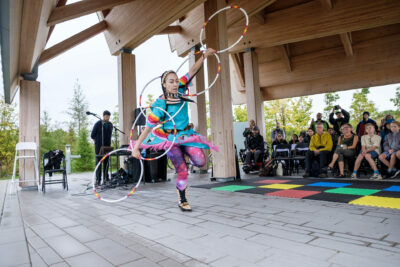
Indigenous dance performance for Culture Days at Wigwam Chi-Chemung. Photo credit: Will O’Hare/ Myseum of Toronto
A boat covered with Indigenous art was docked at the Ontario Place Marina as an evolving art installation and place for people to visit and learn about Indigenous history. Guests were invited to participate in the “Ask An Elder” campaign by visiting the boat during public hours to engage with, ask questions of, and learn from the perspectives of an Indigenous elder. The program was such a success that it was scheduled to return to the waters of Ontario Place for the spring and summer of 2020. In March, when the realities of the COVID-19 pandemic set in, we were forced to pivot and reimagine what this program could look like in a virtual format. When transitioning from “In Real Life” (IRL) programming to digital programming, our team had to evaluate the original purpose of the program, as well as methods for maintaining the high quality of engagement that made the in-person experience so special.
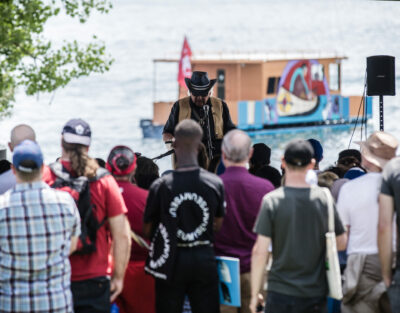
Dr. Duke Redbird at Wigwam Chi-Chemung on Canada Day. Photo credit: Elijah Nichols/ Myseum of Toronto
Dr. Duke Redbird knew he wanted to continue his vision of having the public come together to ask questions in an informal setting, and so Myseum worked to translate this into an impactful digital program. The limited capacity of the boat restricted the number of participants during “Ask An Elder” sessions in the floating studio. Bringing this program to the digital world offered the opportunity to potentially broaden the number of participants interacting with him at a time; this approach would have allowed us to report “good numbers,” but would not have been in keeping with the spirit and experience of the original program.
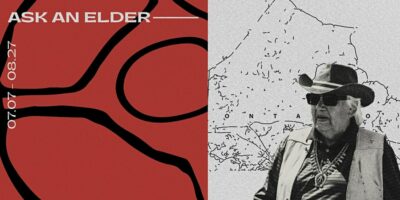
Poster for “Ask an Elder” program. Image credit: Myseum of Toronto
After deciding that keeping with small, personal experiences was the best way to keep the integrity of the program, we then had to determine how to maintain the high standards of quality that we had set the previous year. The goal was to nurture a digital environment that would allow participants to enjoy the same depth of meaningful engagement as a visit with Dr. Duke Redbird on the boat. It was decided that “Ask An Elder” sessions would happen via Zoom on Tuesdays and Thursdays in July and August by registration only; participants, in groups of eight or fewer, would book their 20-minute time slot to engage with Dr. Duke Redbird. The spontaneity of the IRL program—happening upon the boat during a summer stroll along the water, for example—could, unfortunately, not be afforded in this new digital environment. However, due to the popularity of the program, we developed a waiting list and were able to quickly fill last-minute cancellations from this bank of aspirants.
Because the groups were small, we could avoid the awkwardness and blips in communication that often tarnish Zoom meetings and events. Participants were comfortable enough in this digital environment to ask their questions—big and small, simple and complex—to Dr. Duke Redbird and there was time and space to allow for deeper discussions on his insights. The interest level from participants and variety of their questions was humbling and inspiring: how to properly do land acknowledgments; how non-Indigenous teachers can bring Indigenous history, stories, and teachings into their classes; how theatre companies can engage with Indigenous communities and write Indigenous characters. The unforeseen bonus of this type of digital programming is that we were also able to capture the intimate experiences on video. With the consent of participants, we can share these important conversations with an even wider audience, allowing others to learn from them. Elder Redbird was excited to share his teachings through the Myseum platform with anyone looking to learn . Of the “Ask An Elder” program, Duke commented,
In the blink of an eye, the universe was delivered to humans, and with the stroke of a pen it was all taken away; some of us were identified as something different. But with “Ask An Elder,” we wanted to change that with the click of a mouse; to engage with each other, not by what was written and cast in legislative stone, but rather in our capacity to have access to the full breadth of human knowledge.
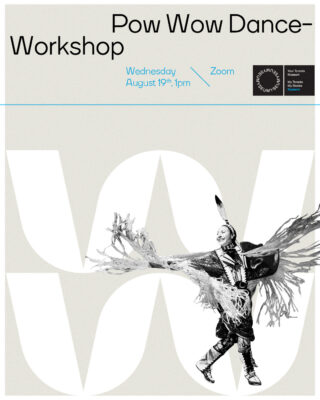
Powwow Dance workshop poster. Image credit: Myseum of Toronto
We also pivoted on other aspects from the previous years’ programming, making them more relevant to the times and to the virtual format. In 2019 we hosted larger events throughout the summer, looking at various topics—Canada Day, art and wellness, theatre, and dance—from an Indigenous perspective. We worked with Angela Miracle Gladue, aka Lunacee, a Cree/Greek mother, and dancer, who performed a hoop dance at one event. This year the digital program offered an opportunity to bring Angela back to host a Powwow workshop, allowing participants to connect with Indigenous culture through art in a participatory way. Nearly 100 participants gathered online on a sunny August afternoon to hear poetry from Duke Redbird, watch performances from Gladue and Anishinaabe dance artist Nimkii Osawamick, and learn the introductory steps to a traditional Powwow dance. It proved to be a fun and educational way to gather in the final weeks of the “Ask an Elder” program.
Reminded of the critical importance of self-reflection about hidden racial biases, we have recognized the format changes forced by the pandemic as an opportunity to offer more programming focused on Indigenous experiences, in partnership with members of Indigenous communities. Wigwam Chi-Chemung started as a way to shed light on the underrepresented Indigenous history of Toronto’s waterfront, while “Ask An Elder” truly put that history to work, encouraging the public to play their part in creating a better future that reconciles our Indigenous roots with our modern lifestyles. I believe it is our responsibility as public historians to ensure we take the past, present, and future approach to storytelling, all while doing so in the most creative and imaginative ways possible. This is a tall order to be sure, but one that will allow us to be thought leaders, especially during these unique and inspiring times.
~Jeremy Diamond was the CEO of Myseum of Toronto from January 2019 – December 2020. He has been a public historian for over twenty years with organizations including the Vimy Foundation and Historica Canada.



